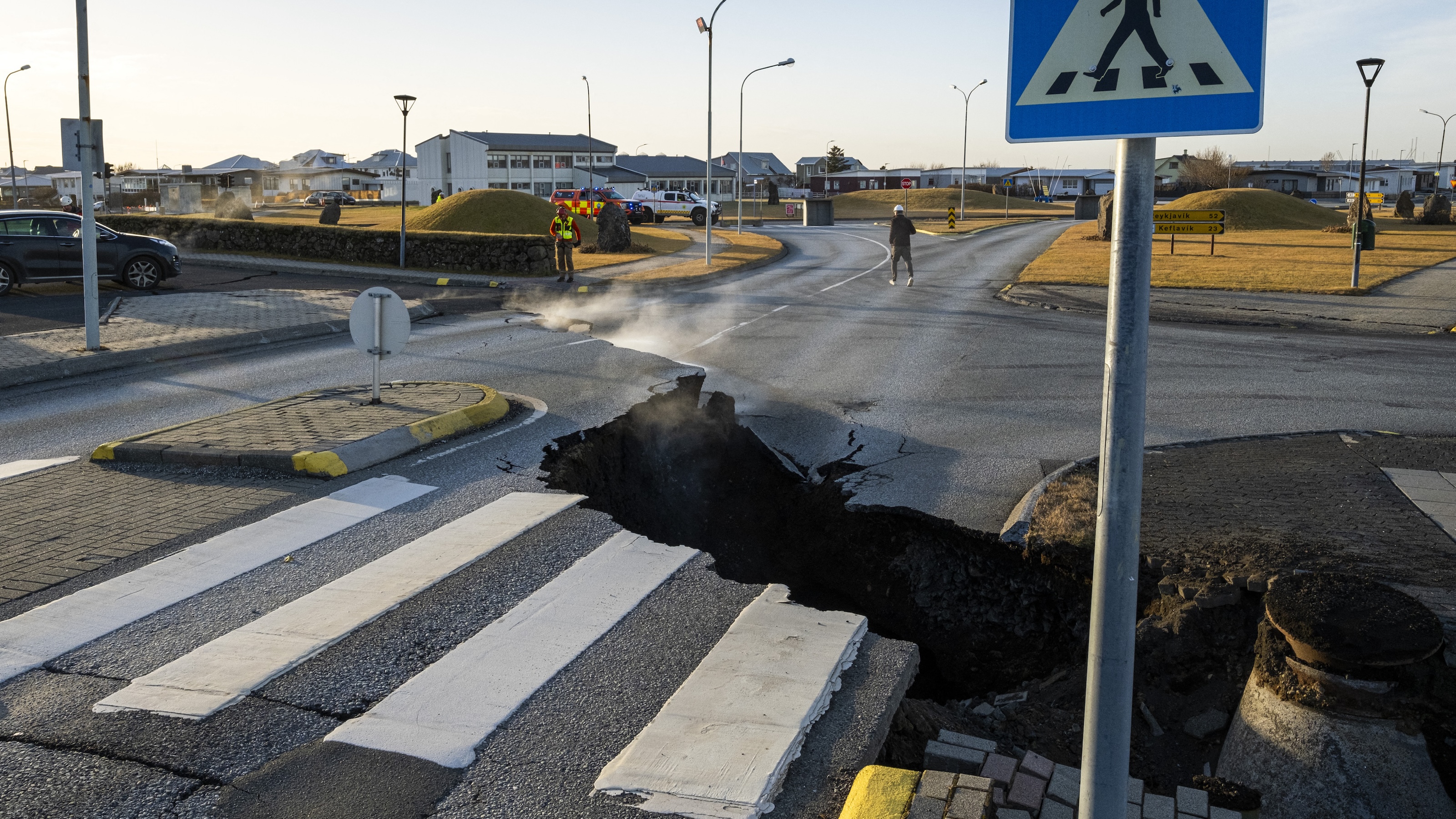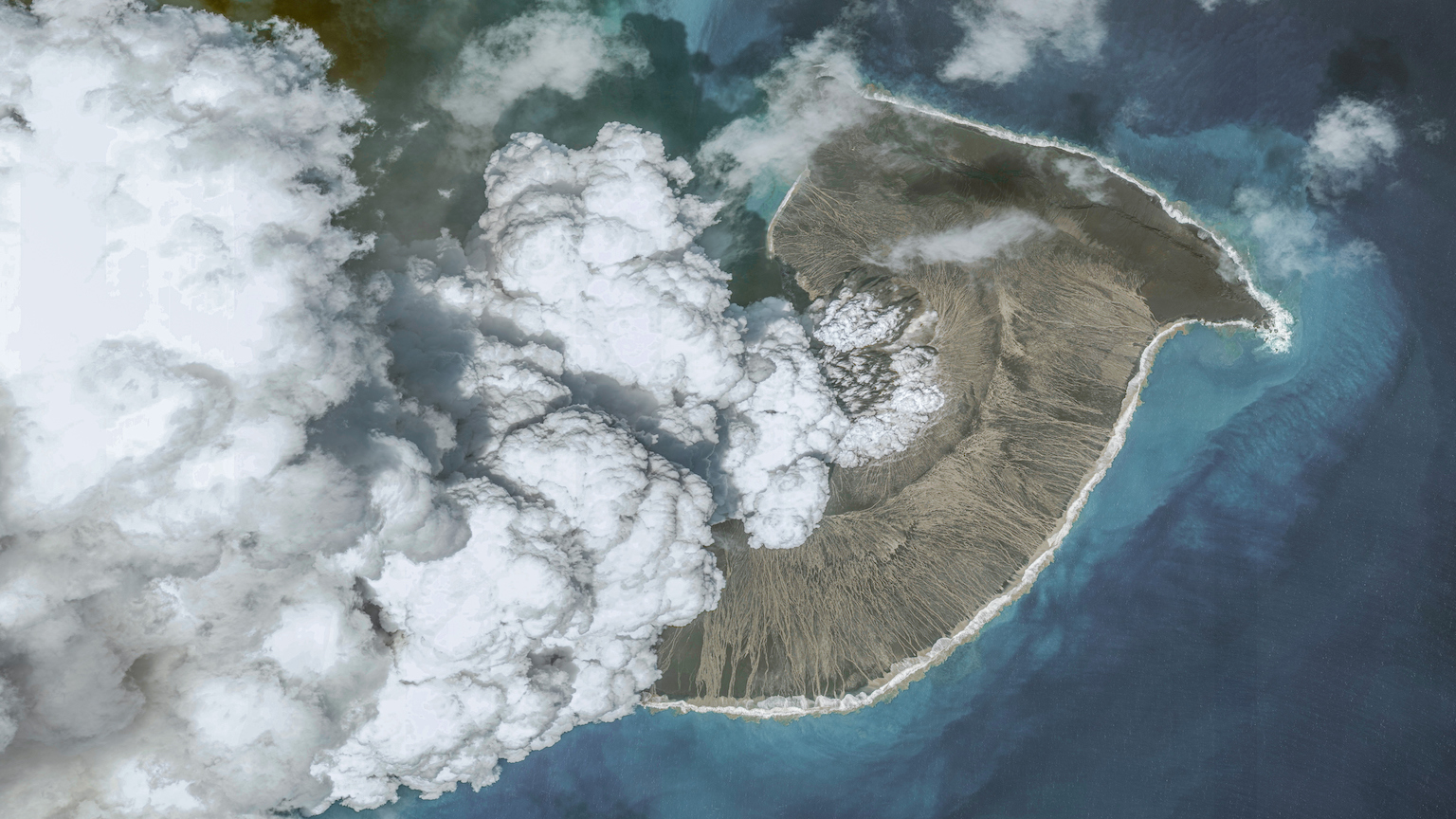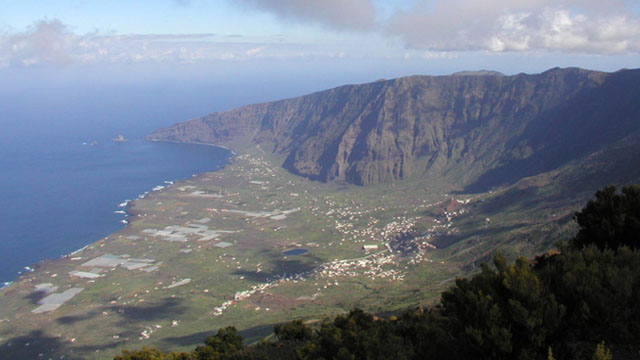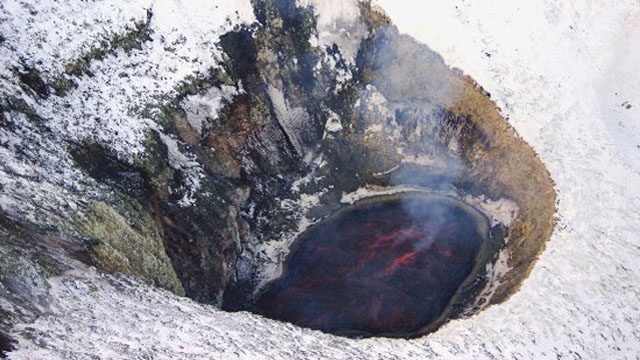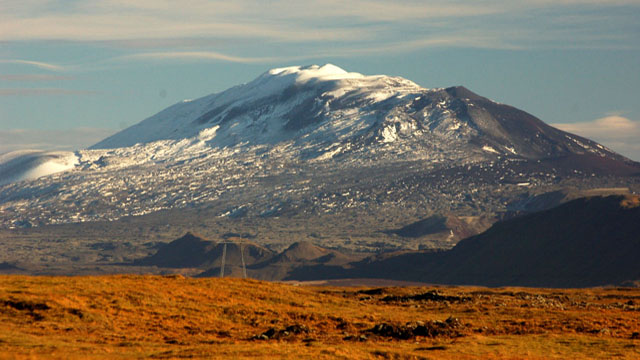Iceland Eruption Update for 3/24/2010
nThe fissure vent eruption near Eyjafjallajokull in Iceland. Image by Þorsteinn Gunnarsson, March 22, 2010.
nn
It has been hard to keep up with the flood of news from the Eyjafjallajokull eruption in Iceland. Eruptions readers have done a good job with getting new images, videos and info up as they happen, so you might want to peruse the comments for those sorts of tidbits (along with discussion of what might be happening).
nn
Here is the latest:
nThe eruption at Fimmvörduháls (considering the eruption is actually occurring between the ice caps) could last weeks to months, which isn’t too surprising for a basaltic fissure event. So far the amount of erupted basalt is relatively small, with most of the lava confined to the area around the fissure and what looks like a drainage the lava is exploiting that heads to the northeast. There also seems to be indications that some of the fissure is coalescing into a spatter cone/scoria cone – where you can see how asymmetrical it is thanks to the wind most likely (see above). Icelandic scientists were able to take samples of the basalt, so we will hopefully know some more about its composition in the near future, but Dr. Haraldur Sigurdsson, the most famous of Iceland’s volcanologists, sees this eruption as very similar to the 1973 eruption in the Westman Islands. As of Monday, the fissure lavas have covered ~0.34 km2
nn
There are quite a few webcams up where you can watch the eruption, just showing the technological world we live in where I can watch an eruption in Iceland live whenever I want. You can also see a pile of images taken by people on Visir.is. The eruption is actually “open for tourists“, much like many of the eruptions in Hawai`i. This is not to say that it is safe to head there outside the bounds that the Icelandic government has set, but many people could get the chance to see a fissure eruption first hand (ah, if only for the time and the money).
nn
There has been a number of articles I’ve seen that have pondered the global consequences of this eruption – mostly thanks to whatever aerosols like sulfur dioxide and carbon dioxide – might have on global climate in the short term. Right now, I would say that anyone being definite about what might happen is, well, full of it. Many of the articles have been making a big deal of the Eyjafjallajokull-Katla connection because “historically” when Eyjafjallajokull erupts, Katla follows. However, the key here is “historically” – even with the relatively long record of humans on Iceland, any historic record is much less than the lifespan of these volcanoes. That is not to say it won’t happen, so Katla should be watched closely.
nn
Also, there has been much discussion in the Eruptions comment about the nature of volcanism in Iceland and the relationship between the seemingly rhyolitic history of Eyjafjallajokull and this basaltic eruption. Well, we know that rhyolite melts can be produced in this rift/hot spot setting, thanks to the direct sampling of such melts, so the fact that the volcano was rhyolitic previously is no surprise. It actually isn’t much of a surprise that you can get a basaltic eruption in a rhyolitic center, either. It is called “bimodal volcanism”, where you can have the same volcano (or nearby volcanoes) erupt both basalt and rhyolite, almost contemporaneous. In fact, I’ve worked on a volcano with a similar history, that being New Zealand’s Mt. Tarawera, where the history of the volcano was dominantly rhyolite until the most recent eruption in 1886, which was a basalt. This basaltic eruption didn’t trigger any massive remelting and eruption of the underlying rhyolite mush from previous eruption – although you can find nifty melting rhyolite chunks in the basalt. If you actually do some of the calculations, it takes a lot of energy to totally melt a rhyolite mush to the point that it might become eruptible (>50% melt?), so this small amount of basalt at Eyjafjallajokull doesn’t seem like enough so far – and anyway, what you really want is the basalt to pond under the rhyolite, not blast right through it any erupt.
nn
{Hat tip to everyone who has posted links I used in this. Keep up the good work!}

